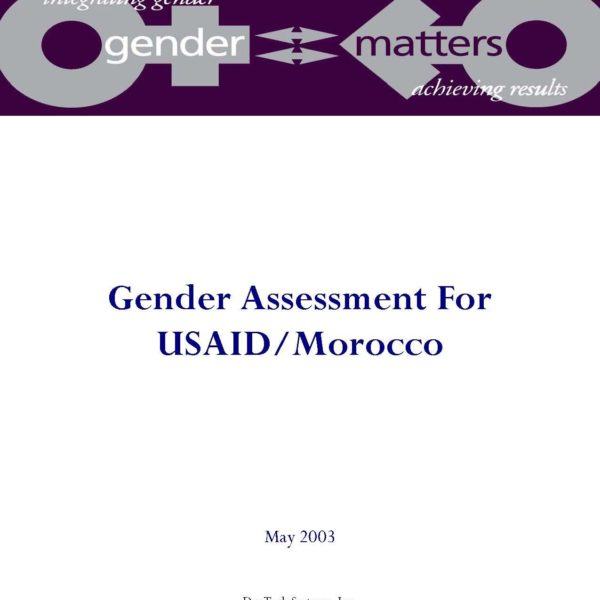This gender assessment provides a baseline overview of gender issues that are pertinent to the sectors and sub-sectors USAID/Morocco is planning to target under its 2004-2008 strategy. Although not exhaustive in scope, this report serves as a starting point for gender mainstreaming under the new country strategy and it provides the Mission with the appropriate questions to ask when developing Performance Monitoring Plans (PMP), designing programs, implementing activities, and monitoring results. As Morocco embarks on expansion of its trade through the Free Trade Agreement (FTA) with the U.S. – which will be signed at the end of this year – there are some key questions that will assist the USAID Mission and the Government of Morocco (GOM) in assessing to what extent gender-based constraints hamper the development of key industries, as well as the impact of different policies and investment strategies on the relative status of women.
USAID/Morocco has determined that its new country strategy will consist of a single Strategic Objective (SO) focused on increased economic opportunities. The SO will focus on three areas: IR1: Increased productivity in irrigated agriculture and agribusiness; IR2: New business opportunities outside of agriculture expanded; and IR3: Business environment improved. Within these sectors, USAID/Morocco will target workforce development designed to improve the skills—basic and specialized—of Morocco’s future labor force, increase the enrollment of girls in middle school education, and good governance activities aimed at helping government work more effectively and transparently. This strategic plan should reflect attention to efforts to improve the status of women by acknowledging both the differential roles of men and women in Moroccan society and the institutional structures that affect those roles. Attention to gender considerations includes both the ways in which gender relations may affect the achievement of results and how results may affect the relative status of women.

